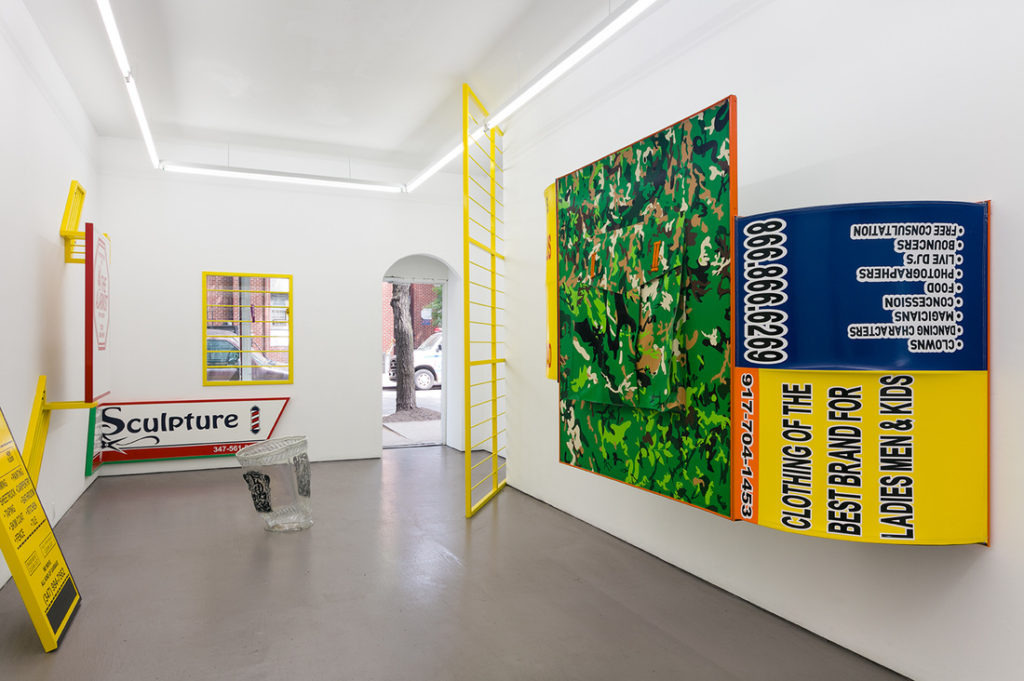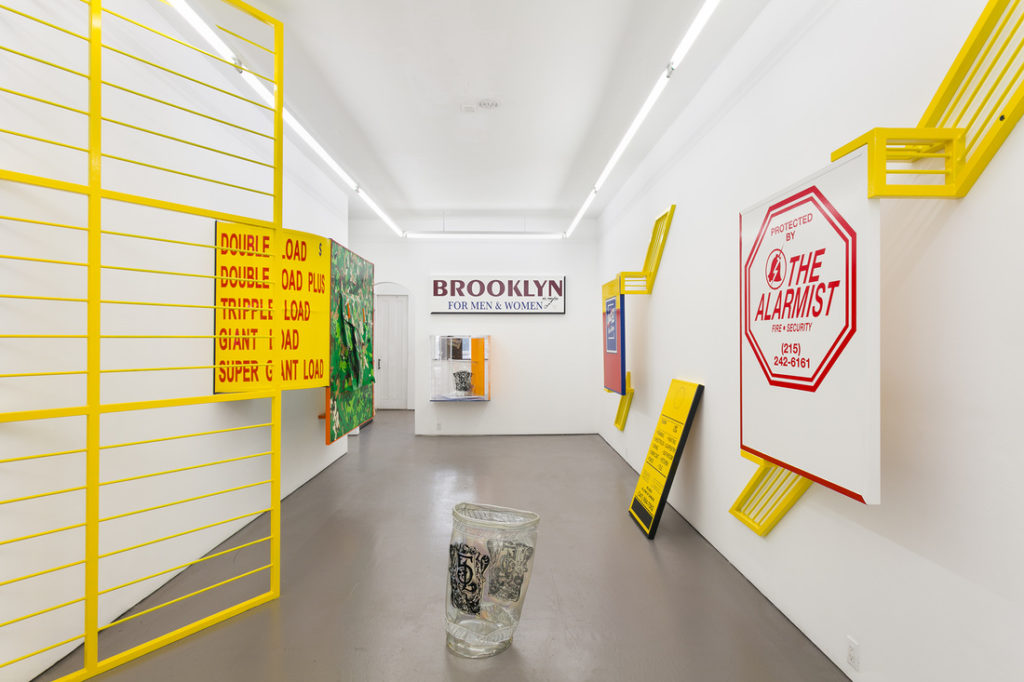Visible in the barred front window of Bed-Stuy’s American Medium is a purple dog leash stitched with white text: “DO NOT FEED”. In the lexicon of the color-coded leash used to protect a canine and alert others, the yellow color of the steel window frame would directly translate to “NERVOUS”.
Borna Sammak’s Town Crier solo exhibition, running from May 14 to June 12, depicts signage characteristic of localized, service-industry small businesses: laundry, home floor care, alarm system installation. Some signs extend from the wall on steel, nervous-yellow colored mounts. ‘Ice Coffee,’ a large plastic coffee cup (embroidered with the late Heath Ledger-funded Greenpoint restaurant 5 Leaves’ logo) on the floor halts movement and muddles attention to the signs; litter that has tripled in size is difficult to ignore. Smaller models of the cups are stuffed and hidden in the sides of the barred front window, matching the same shade of yellow.

Bifurcation, or perhaps a shattering, of the urban neighborhood permeates Town Crier —the pervasiveness of the yellow color becomes clear. ‘Brooklyn for Men & Women 2’ encases another 5 Leaves coffee cup with an image of store-bought bratwursts. A large vinyl camouflage jacket pocket, a feature of the dated HYPEBEAST streetwear uniform, divides three shop signs in ‘Super Giant Load’ and makes itself central, distracting from the awnings. ‘Sculpture’ displays an eponymous text but is punctuated by the image of a barber’s pole and shears; a visual cue to the real-world marginalist economics Sammak’s disjointed alien neighborhood illuminates. The tragedy in ‘Protected by the Alarmist’ is that there’s no warning signal for rent-seeking tactics, infiltration or neo-feudalism.
Short-stay rental listings site Airbnb began operating in New York in the fall of 2008, coinciding with the American housing crisis and the rapid foreclosure of homes. During åyr’s portion of Rhizome’s 2015 Ideas City festival, writer and researcher Peer Illner noted that 20th century New York saw the infiltration of finance, insurance and real estate industries, eliminating manufacturing services and displacing the middle class. Land values subsequently increased 1,000 per cent from 1920 to 1980; a dromological shock solidifying real estate values as wholly speculative (widely inaccesible). Town Crier situates the viewer in the midst of the purported former version of the neighborhood, strewn with debris from a depraved future forced upon its denizens. Sammak’s collection of business signs feels misguidedly antiquated in comparison to the 5 Leaves oyster-spot logo which mimics antiquity itself using heraldry.

If the medieval herald, a town crier, existed today, it would likely be a brand ambassador for Airbnb, or maybe a freelance creative-infiltrator shouting aphorisms about being self-made. Sammak’s works are a constellation of urban surpluses and negations, mapping out the city-as-paradox illustrating separate spaces and times the infiltrator and the native occupy. The high-rise and the nail house facilitate starkly different livelihoods for their respective occupants. Town Crier is a successful testament to the malignant practices of the gentrifier. The modern city project isn’t aesthetic revitalization, it’s disaster relief.**













